Menus
- What you must remember
- Themore
- Theless
- Prices
- Make your2019 BMW S 1000 RR
- Opinion
- Replaces
- Performances
- The technical aspect
- Competitors
- Gallery
- Related articles
The revival of the S 1000 RR. Finally, one might say. Although BMW’s hypersports car had, from its inception, provided stratospheric performance, it was beginning to suffer from dated design and technique that needed updating. Because the competition did not deprive itself of tipping into the overbidding to undermine it. If it was evolving almost wisely, here it is changing dramatically. Chassis, electronics, mechanics, ballistics: everything is reviewed. Sometimes a lot, often everywhere. Before discovering all its mods, let’s announce its new business card. And it will hurt: the fourth generation S 1000 RR is 207 horsepower for 197 kilos.
A missile … or maybe a little more. A tactical interceptor !
This hypersport, the first from the Munich manufacturer, has been on the market 10 years ago. By shaking everything in its path. And since that time, its unique design has only evolved through retouching. The profound internal evolutions are now finding a stylistic overhaul to suit them. It really is a new S 1000 RR, with an updated look from muzzle to tip.
Let us dwell on this minimal upheaval and yet … The asymmetry familiar to the machine, and recurrent on a lot of Bavarian models, is no longer appropriate. We do like everyone else. No more round headlight on one side and polygonal on the other, no more differentiated sidesWhat a change in personality. The fork crown kept only the contours of its air intake. The look is minimalist, menacing, stuck in the edges of a new BMW identity. The forms become more complicated, seek to mark, project the sportswoman into her new genetics. Pay attention to the creepage line running from the top of the rear tubular frame, crossing the junction between the fairings, then cutting through the base of the front fender. It seems much more compact, while it is 23mm taller. Affirming an undeniable break with (all) the previous vintages, the RR gives us a slight impression of … Japanese sports car. Everyone to see, but we would have preferred it to be influenced by the Italian school.
Before seeing what the boiler has in the stomach, let’s take a look at a little trick. Really squeezed out the asymmetry? Look carefully at the height of the cylinder head. There are still, in a reduced model, the gills of a shark on one side; and not on the other. The S 1000 RR still maintains an inheritance relationship..
Volcano fever in the cylinders! From its birth, this bike was noticed by its engine, overpowered, extravagant, with always stories to tell between each curve. It goes into the Hulk phase, with overhaul and variable distribution. Enough to give it new vigor.
The ShiftCam process, inaugurated very recently with the R 1250 series (GS, GSA, R, RT, and RS), is also making its debut in the 999 cm3 in-line 4-cylinder. The shaft on the intake side contains two sets of cams, making it possible to take advantage of a profile adapted to usual speeds and another favoring power at high speeds. At 9000 rpm, two electromechanical actuators operate on the splines in order to switch the ACT from the partial load profile to that of full load. Thus, at low and mid-range, the engine is better filled, offering a level of torque similar to that of the S 1000 R roadster..
Once pushed to its limits, the boiler will express with rage its increase in power. 8 horses gained, allowing a formidable 207 hp at the same speed as before, or 13,500 rpm. What might scare the hell out is that the docks have rarely found the 199 ex-RR nags before … it was often more. We can thus hope, even fear, a monstrous power for this new chapter..
The maximum torque does not change, still 11.5 mkg at 10,500 rpm. It is its presence that evolves, offering more than 100 Nm (10.2 mkg) from 5,500 to 14,500 rpm. Let us stay a moment in the figures to specify that the maximum speed gains 400 revolutions, peaking at 14,600 rev / min.
ShiftCam technology also allows a fuel reduction of 4% as well as a reduction in polluting emissions. But it’s not just variable admission as an internal change. To save weight, the titanium valves are hollow; ACTs are also hollowed out.
Engine manufacturers have managed to save a lot of weight on the engine. Although the ShiftCam comes with a kilo to add, the block has however managed to lose 4 kilos. Everything that could be optimized was optimized: idle gear between the ACTs and the free crankshaft, combined water and oil pumps, reduction and optimization of the majority of the gear elements. As a bonus, the block has been reduced by 12 mm in width. The precision of the gearbox has been improved, as has the air intake, always with the presence of cones of variable length.
How could we gain weight again? With the exhaust. The silencer is much more compact, almost of an R1 size, preceded by catalysts and a huge plenum chamber – despite this, 1.3 kilos managed to fly away.
A little mass grappled on the frame, the rear suspension sketch, 1.6 kg with the new rims, to result in a net loss of 11 kg. Staggering! The S 1000 RR is stuck on a 197 kgs, pile hair between a Ducati 1100 Panigale V4 and a Honda CBR 1000 RR. At a glance, the optional M package saves another 3.5 kg, in particular thanks to the carbon wheels.
This significant weight loss should help to remedy, in part, one of the rare shortcomings of the S 1000 RR. Impressive watts, the sport marked time in agility compared to the competition. The drastic regime will have its effect, and the new chassis much more.
The spine renews its confidence in an aluminum perimeter frame, except that this one relies much more than before on the engine for its rigidity. With an extended load-bearing function, the thruster plays an even more tactical role and allows the frame, radically modified, to gain 1.3 kgs. The width between the legs decreases, from 13 to 30 mm depending on the location.
Weight saving also dictated the design of a new rear frame, which consists of a tubular trellis.
The “Flex Frame” didn’t say it all. The intensive search for traction and efficiency results in a completely new swingarm. No more banana element, place for an arm with reinforcement under the main spars. 300 grams lighter than the old one, it now offers the possibility of modifying the height of its anchor point from +2 to – 2 mm. Trackers with extensive experience will appreciate it. Fans of beautiful parts will be seduced by its finish, enhanced with small plates with the name of the machine on one side and technical information on the other (arrow – tire pressure).
Suspensions, do we touch it or not? Of course, since BM has decided to change everything. As such, the rear shock absorber is anchored perfectly vertical, and further away from the engine to prevent its heat from disturbing the hydraulic work. Optimized with a lot of internal modifications, it is as usual adjustable from anywhere.
A new inverted fork of smaller diameter (45 mm against 46 previously) takes place. It weighs 300 grams less and also offers compression, rebound and preload settings. The front grows in importance as more weight is leaning on it – the weight distribution has increased from 52.3% to 53.8%.
The suspensions can optionally receive the new generation DDC controlled damping. In 10 milliseconds, it adapts the damping it deems most relevant, by following the laws of the “Road”, “Rain”, “Dynamic” or “Race” modes; see the “Race Pro” Modes.
What are “Race Pro” Modes? An option giving access to a series of additional Modes, “Race Pro 1 to 3”, totally circuit oriented. As well as engine brake adjustment and Hill Start Control Pro – same function as the start-up assistant in standard height, supplied as standard, but self-activating as soon as the slope is greater than +/- 5%.
Without pushing the on-board electronics to the level of an HP4 Race, the S 1000 RR is well endowed with piloting aids with a 6-axis inertial unit fine-tuning the efficiency of traction control, anti-wheeling and ABS Pro, active in curves. Plus the Up & Down shifter, the standing start aid and the speed limiter in the pits. The cruise control preferred to stay within the range of options.
The S 1000 RR was one of the last sports cars to inform the pilot via a needle tachometer and liquid crystal window. It is updated with a 6.5-inch TFT screen, which can display 4 different themes and information galore. The classics of course, with speed, bar graph or analog engine speed, trips, fuel gauge and gear engaged. But also the lap times, the angle of inclination, the level of deceleration, the electronic assistance settings, an overspeed indicator, the use of the throttle … to configure its display with great care.
Its lighting is entrusted from end to end to LEDs, with a visual supposed to offer the appearance of a racing car. The indicators are no longer on the sides and have migrated into the mirrors. Seems we see them better like this.
Let’s not forget the braking. Still performed by 320mm discs at the front, but the calipers have changed. More from Brembo M4; the new clamps are branded BMW, with 4 pistons and radial mounting. For the rear, a 220 mm disc alongside a single-piston caliper.
Almost a regret; given the transformation of the S 1000 RR, a good pair of Brembo Stylema would have superbly completed the endowment.
A rouste! This is what the new BMW S 1000 RR intends to inflict on the category. Its well-known recipe is, however, always more impressive: less weight and more watts. Its arguments are more than convincing, its design propels it towards a new future, and its desire to slaughter the stopwatch is even more vivid. Will this new chapter be the one that will unlock the greatest rewards for him in the world championships? We can certainly expect an arrival almost as noticed as its debut. Now turn the accelerator and hold on; you will have to collect what she will send you in the buffet.
************** Update of June 22, 2019:
In mid-June 2019, BMW suspended sales of its Bavarian missile due to a machining problem in the gearbox. 110 machines sold in Germany have been recalled for an engine change. Regarding the French market, absolute silence. No official information has been communicated but what is certain is that in France also the sales of the Bavarian hypersportive have been suspended..
What you must remember
Themore
Theless
Prices
19,200 €
Price
nine
Compare
the credits
Make
your2019 BMW S 1000 RR
Estimate, calculate and compare the cost of insuring your motorcycle.
Calculate the cost of
insurance
Test the price of the motorcycle insurance specialist
Opinion
on 8 opinion
users
Read the reviews
Replaces
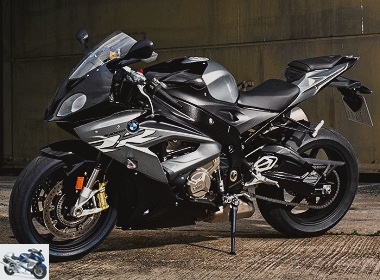
S 1000 RR 2018
Model marketed in
2019
2020
2021
Performances
-
Max speed:
about 300 km / h -
Acceleration
0 to 100: 3.10 s -
Consumption
medium: 6.40 l
The technical aspect
2019 BMW S 1000 RR
- Frame
- Frame: double perimeter aluminum beam
- Tank: 16.5 liters
- Seat height: 824 mm
- Length: 2,073 mm
- Width: 846 mm
- Wheelbase: 1,441 mm
- Weight in running order: 197 kg
- Train before
- Telehydraulic inverted fork Ø 45 mm, deb: 120 mm
- 2 Ø 320 mm discs, 4 piston radial calipers
- Front wheel:
120/70
– 17

- Transmission
- 6-speed gearbox
- secondary by chain
- Rear axle
- Mono-shock absorber, deb: 117 mm
- 1 disc Ø 220 mm, 1 piston caliper
- Rear wheel:
190/55
– 17
- Motor
- 4 Cylinders
in line
, 4 stroke - Cooling: by water
- Injection Ø 48 mm
- 2 ACT, variable
- 4 valves per cylinder
-
999 cc
(80 x 49.7 mm) -
207
ch
at 13,500 rpm -
11.50 mkg
at 10,500 rpm - Compression: 13.3: 1
- Crit’air:
Detached pieces
exhaust
motor
fluid
electricity
filtration
braking
chain kit
Competitors
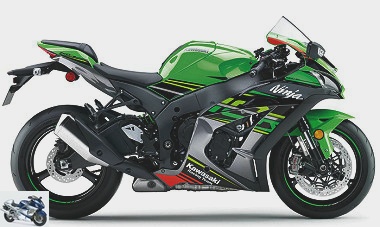
Kawasaki Ninja 1000 ZX-10R KRT Replica 2019
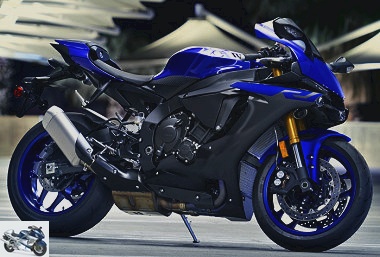
2019 Yamaha YZF-R1 1000
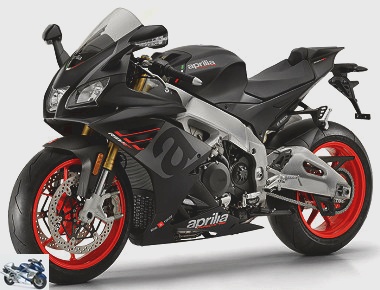
Aprilia 1000 RSV4 RR 2019
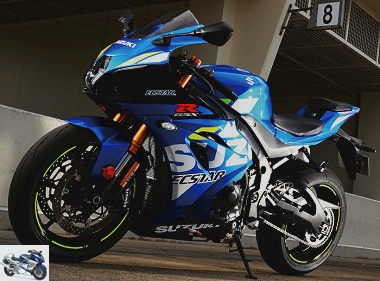
Suzuki GSX-R 1000 R 2019
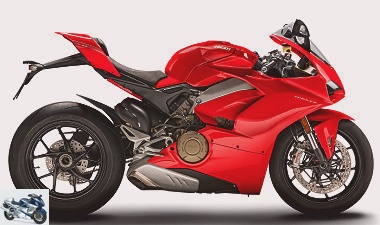
Ducati 1100 Panigale V4 2019
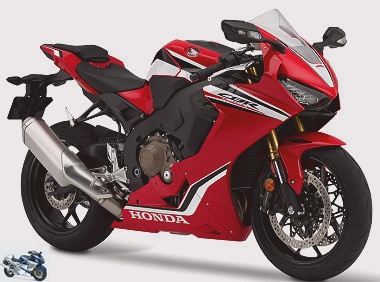
2019 Honda CBR 1000 RR Fireblade
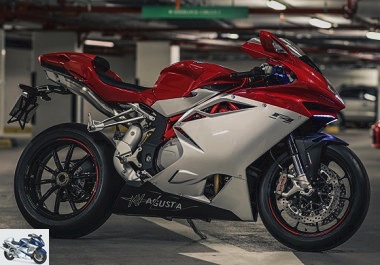
2019 MV-Agusta F4 1000
Gallery

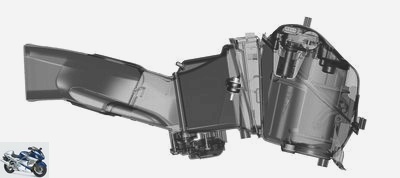
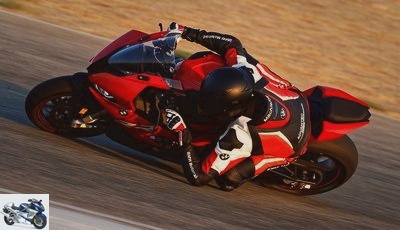

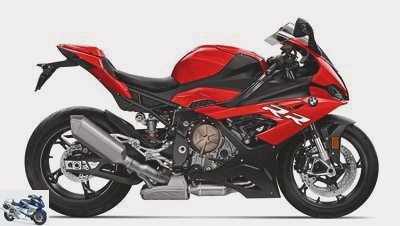
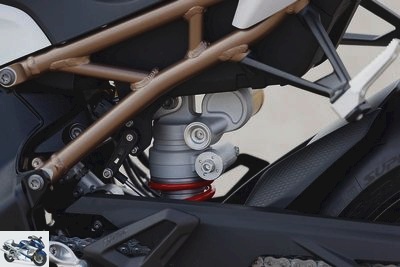

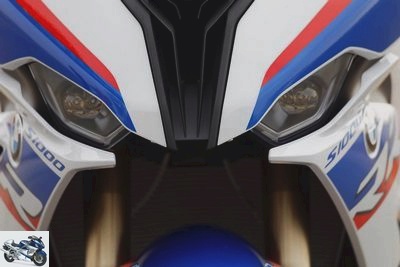

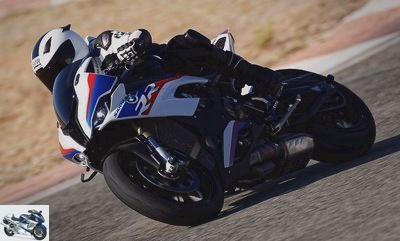
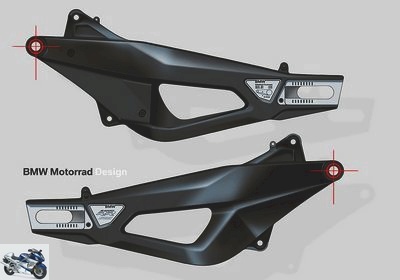

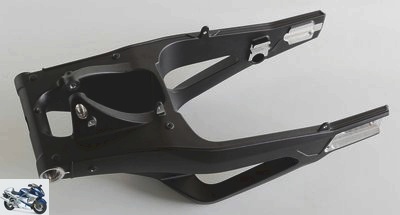
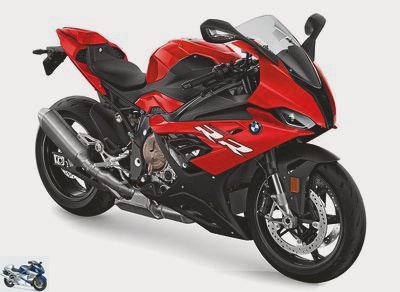
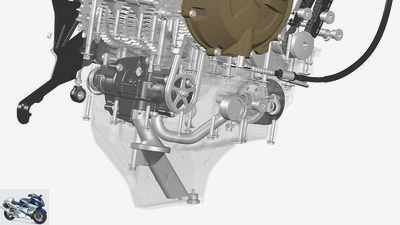
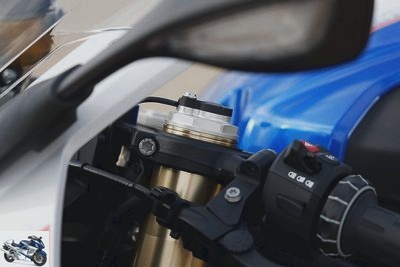
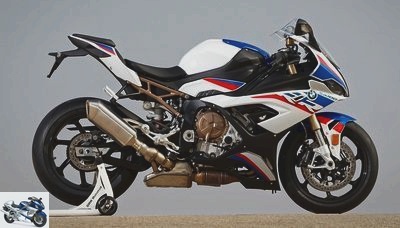

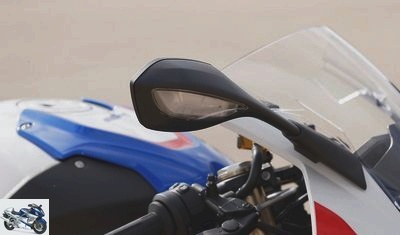
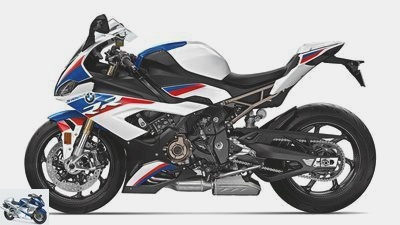
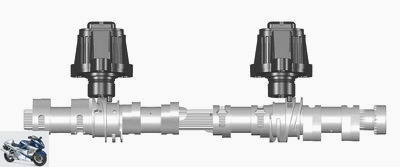
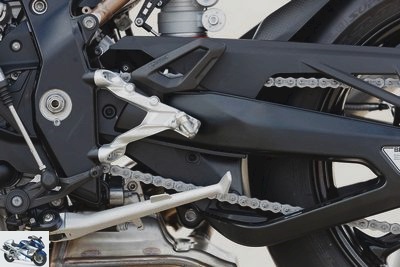
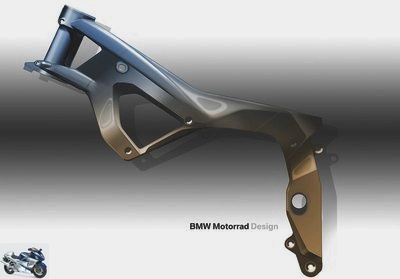
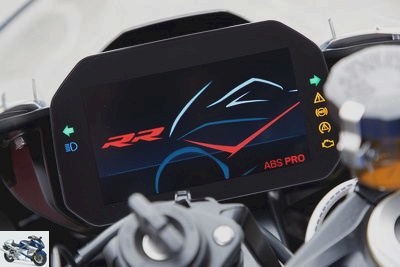
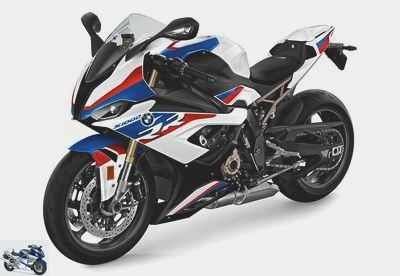
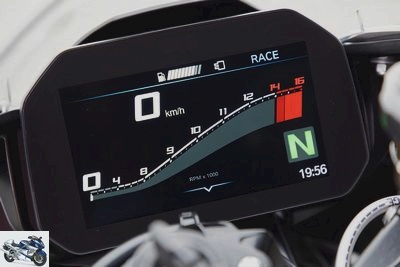
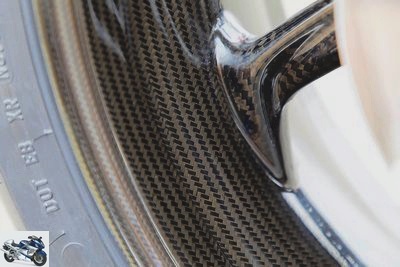
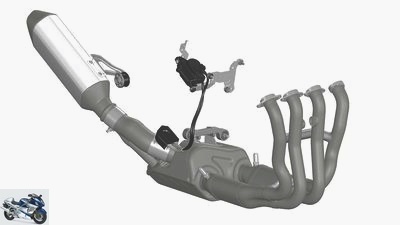
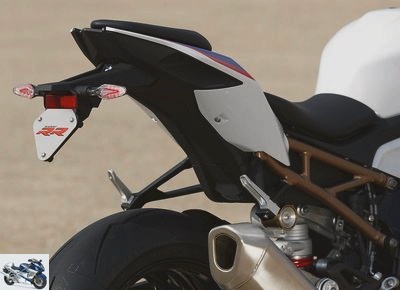
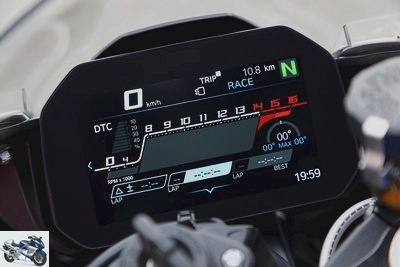
Related articles
-
The revival of the S 1000 RR. Finally, one might say. Although BMW’s super sports car had, from its inception, provided stratospheric performance, it was…
-
I’m just telling you, and some won’t want to giggle anymore. There will be one before and one after the FTR 1200. Why ? Because it will radically change…
-
The revival of the S 1000 RR. Finally, one might say. Although BMW’s super sports car had, from its inception, provided stratospheric performance, it was…
-
Must sting! Must decide! Must kick the train! The 650 V-Strom is fed up with the Tracer and the Versys. In 2017, she wanted to reinvest the field. The…
-
Shortly after its appearance, the Yamaha MT-10 had already received its first improvements. The most notable was the appearance of a QSS shifter,…
-
The R1 continues on its way, not at all satisfied with its thirst for performance. The victories in Endurance only reinforce his status as a successful…
-
Remember 4 years ago, roughly the same period: Kawasaki presented the Z 1000. A shock for everyone, a beast on 2 wheels, a design that heated, a chassis…
-
Are you one of those people who struggle to tear themselves from the arms of Morpheus every morning? Who roll painfully out of bed to start a semblance…
-
Remember 4 years ago, roughly the same period: Kawasaki presented the Z 1000. A shock for everyone, a beast on 2 wheels, a design that heated, a chassis…
-
2018 Honda CBR 1000 RR Fireblade SP
Whether on the track or on the road, driving the CBR 1000 SP is a moment you never tire of. And which we can not get tired of. It knows how to take…